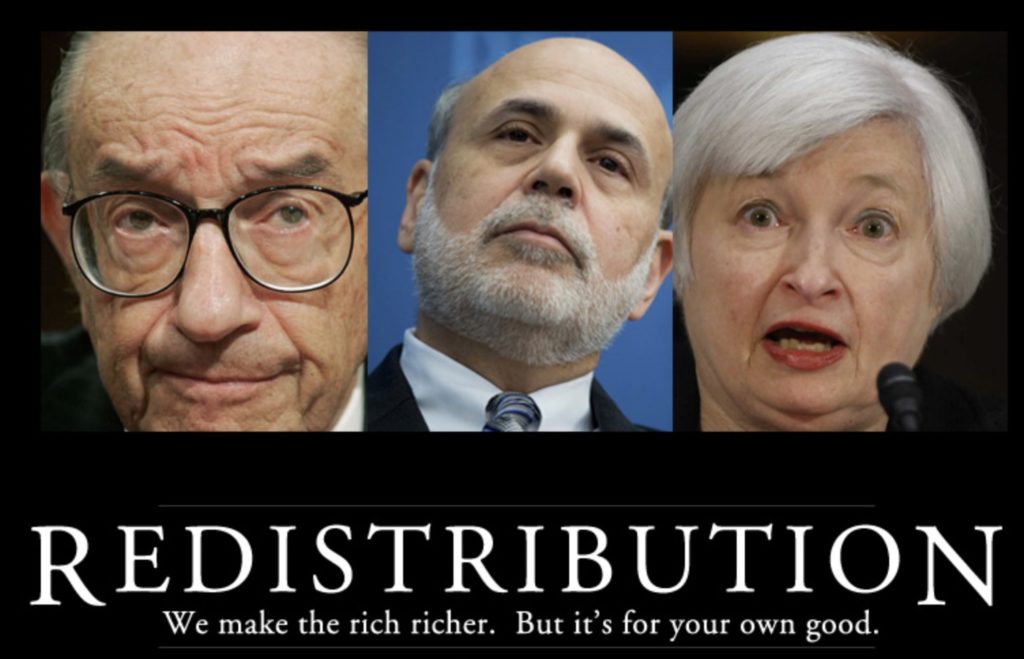
Merging, on paper, the affluent midtown neighborhood and the struggling one uptown placed Hudson Yards in a community with an overall high unemployment rate, positioning developer Related Cos. to gain low-cost financing from foreigners seeking green cards.
The program through which that happens, known as EB-5, enables foreign nationals to obtain U.S. permanent-resident status by putting up money for new business ventures that create American jobs. It gives ventures in high-unemployment and rural areas a special status to encourage investment. But as the program’s popularity has soared in recent years, the bulk of immigrant investment is going to projects that are located, like $20 billion Hudson Yards, in prosperous urban neighborhoods.
At least 80% of EB-5 money is going to projects that wouldn’t qualify as being in Targeted Employment Areas without “some form of gerrymandering,” estimates Michael Gibson, managing director of USAdvisors.org, which evaluates projects for foreign investors.
Increasingly, the money appears to be flowing to the flashiest projects, which the investors often see as safest, EB-5 professionals say. Among those getting EB-5 money are an office building set to host Facebook Inc. near Amazon.com Inc.’s Seattle headquarters, a boutique hotel in high-end Miami Beach, and a slim Four Seasons condo-hotel in lower Manhattan that sports a penthouse with an asking price above $60 million. In all of them, geographic districts were crafted to include higher-unemployment areas.
– From the Wall Street Journal article: How a U.S. Visa-for-Cash Plan Funds Luxury Apartment Buildings
Another day, another story highlighting just how completely corrupt and sleazy the U.S. economy has become.
I’ve covered the issue of EB-5 visas before, and how a program that was initially supposed to help high unemployment neighborhoods attract investment, has become another scheme to further enrich America’s crony capitalist class.
Before we get into the meat of this post, here are a few excerpts from last year’s piece, How NYC’s Biggest Real Estate Project in a Generation is Being Financed by Selling Green Cards to the Chinese:
Developer Related Cos. says it has raised roughly $600 million from the families to build the foundation for three skyscrapers at the West Side project, a 17-million-square-foot colossus of office, retail and residential space set to open over the next decade.
To finance the concrete-steel platform, Related tapped a little-known and at times controversial federal visa program known as EB-5, which offers green cards to foreign families who invest at least $500,000 in U.S. projects that create at least 10 jobs per investor.
At times the program has invited scrutiny. The U.S. Securities and Exchange Commission last year warned of “fraudulent securities offerings” related to the EB-5 program, in which investors put money into nonexistent projects. The program also has come under fire because it can be difficult for investors overseas to discern safe investments from risky ones, and if the investment fails to create the required jobs, they don’t get a green card. In addition, claims of jobs created are difficult to verify and the program administrator has been criticized for not having an effective system for doing so.
Developers are embracing the program largely because it provides low-cost capital. Money borrowed through the EB-5 program carries much lower interest rates, sometimes half of what companies typically pay, executives said. That is because investors are primarily seeking green cards, not a profit, and generally are willing to accept low returns, EB-5 advisers said.
While that article explained the recent explosion in EB-5 visa popularity, it failed to highlight the fact that this money was supposed to disproportionately help struggling areas. In reality, it’s all being funneled to luxury construction. Here’s how.
Also from the Wall Street Journal:
NEW YORK—The cluster of luxury apartment buildings and office towers rising in a development west of midtown called Hudson Yards seems a world apart from the low-income housing projects of upper Manhattan.
But for purposes of an immigration program that helps finance Hudson Yards, it and Harlem’s Manhattanville public-housing towers are in the same district: a stringy one connected by three Census tracts that run along the Hudson River.
Merging, on paper, the affluent midtown neighborhood and the struggling one uptown placed Hudson Yards in a community with an overall high unemployment rate, positioning developer Related Cos. to gain low-cost financing from foreigners seeking green cards.
The program through which that happens, known as EB-5, enables foreign nationals to obtain U.S. permanent-resident status by putting up money for new business ventures that create American jobs. It gives ventures in high-unemployment and rural areas a special status to encourage investment. But as the program’s popularity has soared in recent years, the bulk of immigrant investment is going to projects that are located, like $20 billion Hudson Yards, in prosperous urban neighborhoods.
A primary concern is that the use of EB-5 financing for high-price condo and office towers sops up the program’s capacity and leaves poorer communities out in the cold. No more than 10,000 visas that lead to permanent-resident status can be given out each year under the program. It hit the limit in the fiscal year ended Sept. 30, 2014.
Though statistics aren’t made public on individual projects, a recent paper by two New York University professors tracked 25 large business startups that have turned to the EB-5 program to raise a total of more than $4.5 billion in financing. Twenty-two were urban real-estate projects, including 14 in prime Manhattan neighborhoods and others in Seattle and on the Las Vegas Strip.
Related is the single largest user of EB-5 financing. By its own measure, it accounts for about 20% of the dollars being raised through the program today. The closely held company used the program to raise $600 million for a first phase of Hudson Yards last year and is in the process of raising another $600 million for a new office tower and a retail hub.
The coming debate in Congress stands to bring the program its greatest scrutiny since it was created in 1990.
Things began to change in 2009, amid two shifts. The agency overseeing the program—the U.S. Citizenship and Immigration Services unit of the Department of Homeland Security—let the job-creation tally count more construction jobs if they last at least two years. And banks all but shut off credit for construction projects amid the economic slump.
Real-estate developers discovered EB-5. Money from foreign investors, primarily Chinese, began to pour into major developments around the U.S., typically supplementing more-senior debt. A hotel and apartment project in Washington raised more than $40 million through the program. A W hotel in Hollywood raised $20 million. A planned 16-tower apartment project connected to Brooklyn’s Barclays Center basketball arena took in $229 million.
Lenders have since returned to real estate, but developers are attracted by another aspect of EB-5 financing: low cost. Because the foreign investors are after a green card, they have been willing to accept very low interest rates on money they lend, typically for four or five years. Developers save even though they face other costs to use the program.
Many of such projects could easily have been financed on the private market, according to Gary Friedland, who wrote the NYU paper with fellow professor Jeanne Calderon. “It’s a profit enhancement,” he said. “The original argument was more of a ‘but for’ argument,” in which EB-5 was meant to spur projects that wouldn’t otherwise have happened. “That focus has been lost.”
At least 80% of EB-5 money is going to projects that wouldn’t qualify as being in Targeted Employment Areas without “some form of gerrymandering,” estimates Michael Gibson, managing director of USAdvisors.org, which evaluates projects for foreign investors.
Increasingly, the money appears to be flowing to the flashiest projects, which the investors often see as safest, EB-5 professionals say. Among those getting EB-5 money are an office building set to host Facebook Inc. near Amazon.com Inc.’s Seattle headquarters, a boutique hotel in high-end Miami Beach, and a slim Four Seasons condo-hotel in lower Manhattan that sports a penthouse with an asking price above $60 million. In all of them, geographic districts were crafted to include higher-unemployment areas.
Meanwhile, some wanting to raise money for projects in rural areas and low-income parts of cities say they find it increasingly hard to compete. Evan Daniels has been trying for four years to raise about $40 million through the EB-5 program for a door-manufacturing plant in the rural southwestern Missouri town of Lamar.
“The harder we worked on this, the more we found the money was going to L.A. and New York,” he said.
In China, one pitch is speed in obtaining green-card approvals from U.S. Citizenship and Immigration Services. Related’s main broker has advertised that EB-5 investors receive initial approvals 11 months faster than the standard wait. That would mark a big advantage, because the average wait is about 14 months. It is unclear how its applications would be processed so quickly. USCIS declined to comment on Related’s applications.
So the U.S. government is subsidizing the wealthiest developers to build projects for the wealthiest Americans. Someone must have taken a class taught by the Federal Reserve.
Recall the post from earlier this year: Number of NYC Apartments for Rent Above $50k/Month Triples Since ’08; 82% of U.S. Construction = Luxury Units. Now we know why.

Just another day in the imperial Banana Republic.
For related articles, see:
How the Pennsylvania Turnpike Commission is Selling Residency to Chinese “Investors” at $500k a Pop
In Liberty,
Michael Krieger
Donate bitcoins: 35DBUbbAQHTqbDaAc5mAaN6BqwA2AxuE7G
Follow me on Twitter.



Reprehensible. Put bars on the white house and don’t let them out.
Is there any candidate out there offering to fix this?
No….the US is on an irrecoverable spiral downwards
A NEW LOW. Using visas to help the invasion of America even more.